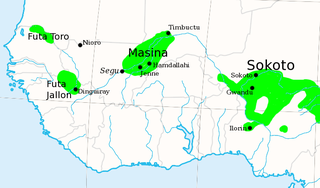Related Research Articles

The Nineteenth Amendment to the United States Constitution prohibits the states and the federal government from denying the right to vote to citizens of the United States on the basis of sex. Initially introduced to Congress in 1878, several attempts to pass a women's suffrage amendment failed until passing the House of Representatives on May 21, 1919, followed by the Senate on June 4, 1919. It was then submitted to the states for ratification. On August 18, 1920, Tennessee was the last of the necessary 36 ratifying states to secure adoption. The Nineteenth Amendment's adoption was certified on August 26, 1920: the culmination of a decades-long movement for women's suffrage at both state and national levels.

A fetish is an object believed to have supernatural powers, or in particular, a human-made object that has power over others. Essentially, fetishism is the attribution of inherent value, or powers, to an object.
A work song is a piece of music closely connected to a form of work, either sung while conducting a task or a song linked to a task which might be a connected narrative, description, or protest song.

The Makua people, also known as Makhuwa, are a Bantu ethnic group found in northern Mozambique and the southern border provinces of Tanzania such as the Mtwara Region. They are the largest ethnic group in Mozambique, and primarily concentrated in a large region to the north of the Zambezi River.

The Massina Empire was an early nineteenth-century Fulbe Jihad state centered in the Inner Niger Delta area of what is now the Mopti and Ségou Regions of Mali. Its capital was at Hamdullahi.

Railways with a track gauge of 3 ft 6 in / 1,067 mm were first constructed as horse-drawn wagonways. From the mid-nineteenth century, the 3 ft 6 in gauge became widespread in the British Empire, was known as the Cape Gauge, and was adopted as a standard in Japan and Taiwan.

Egyptomania was the renewed interest of Europeans and Americans in ancient Egypt during the nineteenth century as a result of Napoleon's Egyptian Campaign.

The Arab slave trade is the intersection of slavery and trade surrounding the Arab world and Indian Ocean, mainly in Western and Central Asia, Northern and Eastern Africa, India, and Europe. This trade occurred chiefly between the medieval era and the early 20th century, through slave markets in these areas, with the slaves captured mostly from Africa's interior, Southern and Eastern Europe, the Caucasus, and Central Asia.

Saint-Étienne-au-Mont is a commune in the Pas-de-Calais department in the Hauts-de-France region of France near Boulogne-sur-Mer. Besides the main settlement Saint-Étienne-au-Mont, the commune consists of the two smaller settlements Pont-de-Briques and Écault.
The history of the Jews in Oceania starts with early explorers, sealers and whalers. Jewish and other settlers arrived in Oceania from the eighteenth century. They settled in Australia and New Zealand, and then on the smaller islands of Oceania.

The 19th (nineteenth) century was a century that began on January 1, 1801, and ended on December 31, 1900.
African-American women began to agitate for political rights in the 1830s, creating the Boston Female Anti-Slavery Society, Philadelphia Female Anti-Slavery Society, and New York Female Anti-Slavery Society. These interracial groups were radical expressions of women's political ideals, and they led directly to voting rights activism before and after the Civil War. Throughout the 19th century, African-American women like Harriet Forten Purvis, Mary Ann Shadd Cary, and Frances Ellen Watkins Harper worked on two fronts simultaneously: reminding African-American men and white women that Black women needed legal rights, especially the right to vote.
Afro-Hondurans or Black Hondurans, are Hondurans of African descent. They descended from Africans, who were enslaved from the West Indies and identified as Garifunas and Creole peoples. The Creole people were originally from Jamaica and other Caribbean islands, while the Garifuna people were originally from Saint Vincent and the Grenadines. They arrived in Honduras between the nineteenth and early twentieth centuries to work on the export of bananas, and on construction work.

Slavery in Ethiopia existed for centuries, going as far back as 1495 B.C. There are also sources indicating the export of slaves from the Aksumite Kingdom. The practice formed an integral part of Ethiopian society, from its earliest days and well in to the 20th century so much so even Ethiopian rulers, including those who did not approve of the institution, such as Emperor Menelik II (1889-1913) and Emperor Haile Selassie, are said to have owned slaves by the thousands.

Julia A. J. Foote was ordained as the first woman deacon in the African Methodist Episcopal Zion Church and the second to be ordained as an elder.
Beninese American are Americans of Beninese descent. According to the census of 2000, in the United States there are only 605 Americans of Beninese origin. However, because since the first half of the eighteenth century to nineteenth many slaves were exported from Benin to the present United States, the number of African Americans with one or more Beninese ancestors could be much higher. The number of slaves from Bight of Benin exported to present United States exceeded 6,000 people, although this might consist not only in Benin, but also washes the shores of Ghana, Togo and Nigeria. It is also important to note that they were slaves from modern Benin, who exchanged voodoo practices with Francophone African descendants in Louisiana. Currently, there are Beninese communities in cities such as Chicago or Washington D.C. and in other states as New York.
Yoruba Americans are Americans of Yoruba descent. The Yoruba people are an ethnic group originating in southwestern Nigeria and southern Benin in West Africa.
Luso-Africans are people of mixed Portuguese and African ancestry who speak Portuguese. Vast majority of Luso-Africans live in former Portuguese Africa, now referred to as Lusophone Africa, i.e. modern countries of Angola, Guinea-Bissau, Cape Verde, Mozambique, São Tomé and Príncipe, and Equatorial Guinea. A sizable number of Luso-Africans have also settled in Portugal where they form a racial minority. This ethnic identity arose from the sixteenth century as primarily male Portuguese settlers, often Lançados, settled in various parts of Africa, often marrying African women.
Americo-Liberian people, or Congo people or Congau people in Liberian English, are a Liberian ethnic group of African American, Afro-Caribbean and Liberated African descent. The sister ethnic group of Americo-Liberians are the Sierra Leone Creole people, who share similar ancestry and related culture. Americo-Liberians trace their ancestry to free-born and formerly enslaved African Americans who emigrated in the 19th century to become the founders of the state of Liberia. They identified there as Americo-Liberians. Some African Americans following resettlement in Canada also participated as founding settlers in Sierra Leone and other Recaptive repatriates settled in present-day Côte d'Ivoire.

Salihiyya is a tariqa (order) of Sufi Islam prevalent in Somalia and the adjacent Ethiopian region of Ogaden. It was founded in the Sudan by Sayyid Muhammad Salih (1854-1919). The order is characterized by a puritanism typical of other revivalist movements.
References
- ↑ Adderley, Rosanne Marion (14 June 2019). "New Negroes from Africa": Slave Trade Abolition and Free African Settlement in the Nineteenth-century Caribbean. Indiana University Press. ISBN 978-0253347039 – via Google Books.
| This Bahamian biographical article is a stub. You can help Wikipedia by expanding it. |